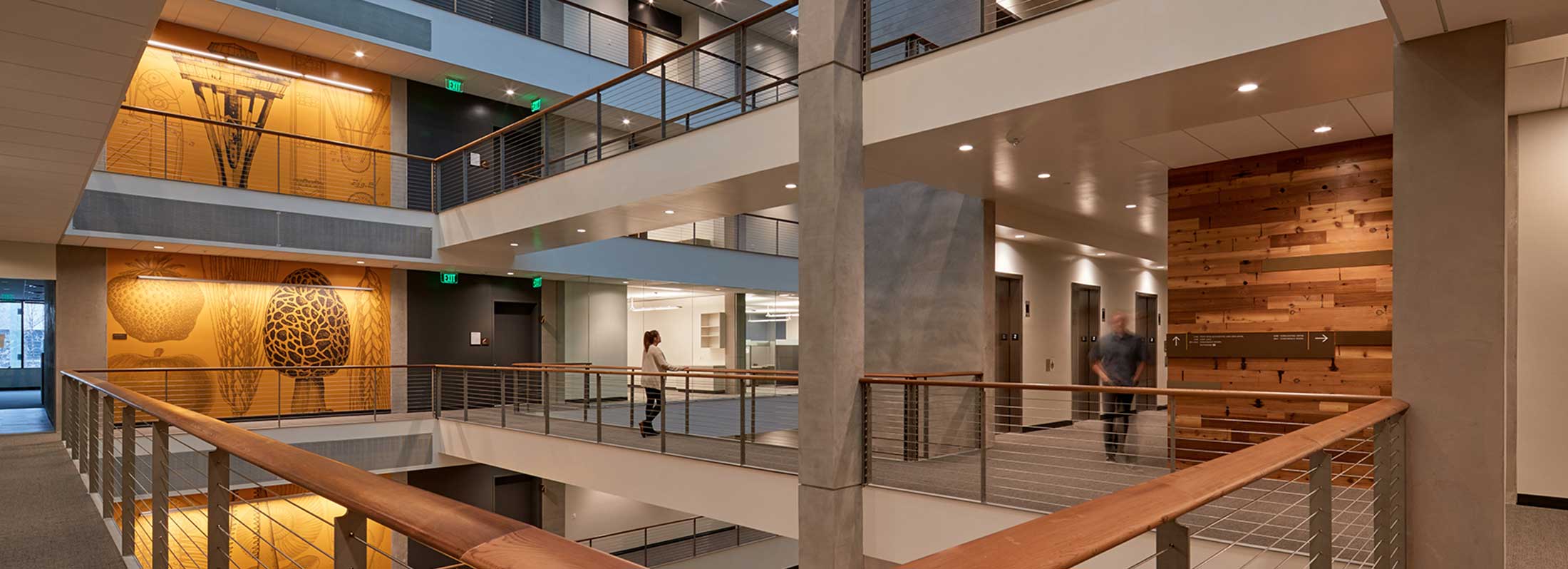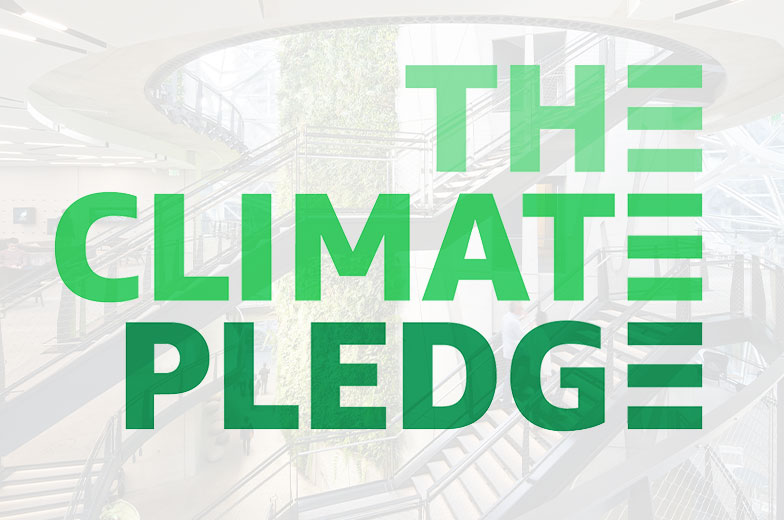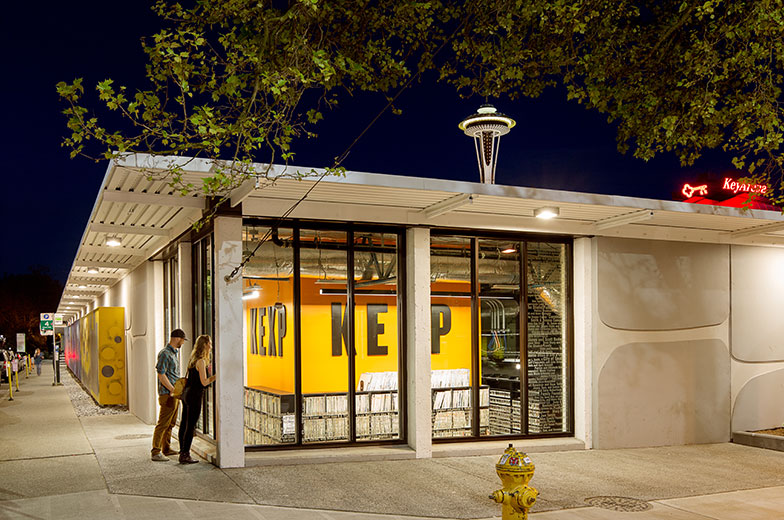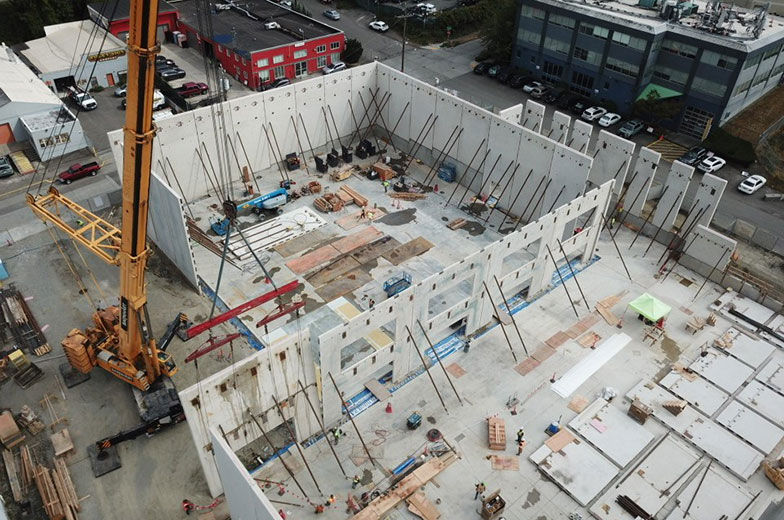Measuring and Reducing Embodied Carbon in Concrete
Materials as a Path to Greenhouse Gas Reduction
by Dave Walsh, Preconstruction Sustainability Manager
For its new 106 11th Avenue office building, the State of Washington challenged the Sellen design-build team to deliver a new model of office efficiency and sustainability. In addition to reducing greenhouse gases (GHG) from building operations by 71%, the team focused on minimizing the embodied carbon in concrete as a complementary path to reduce overall greenhouse gas emissions.
By redesigning the concrete mixes for this project and producing Environmental Product Declarations (EPD) for almost all mixes, this project reduced the overall embodied carbon in concrete by 27%, compared to similar mixes in the Pacific Northwest. Compared to national averages, this project reduced the overall embodied GHG from concrete by 31%. The maximum GHG reduction for a specific mix used in this project was 58%, as compared to the national average.
By optimizing the 12,024 cubic yards of concrete placed in this project, it saved 1,386 metric tons of GHG as compared to the national average of similar strength mixes; this is the equivalent of not driving 3.4 million car miles.
Read the full report by Preconstruction Sustainability Manager Dave Walsh here.
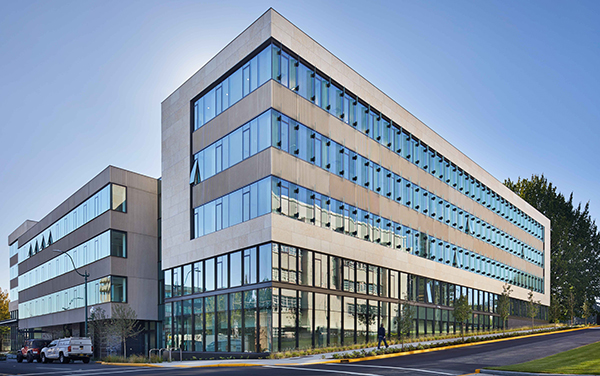
Project Information
Name: 106 11th Avenue, State Office Building
Owner: State of Washington, Department of Enterprise Services
Design-Builder: Sellen Construction
Concrete Supplier: Cal Portland
Structural Engineer: KPFF
Architect: ZGF Architects

